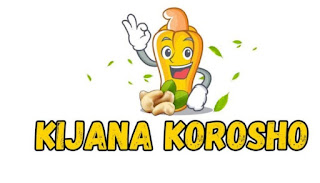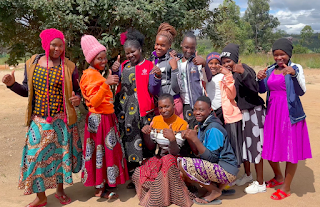Sapphire project
/ENGLISH VERSION BELOW/
Aujourd’hui, j’ai rencontré Pendo, une étudiante de deuxième année dans le programme Team Academy d’Iringa. J’en ai profité pour la questionner sur ses projets. Avec son équipe de 7 étudiant-es, elle fabrique, emballe et vend de la farine de maïs en paquets de 5kg et 25kg. Ils ont commencé ce projet afin de récolter des fonds pour investir dans d’autres projets et après 3 mois, ils ont déjà un chiffre d’affaire de 240’000 TZS par mois (l’équivalent de 100 CHF). Leurs principaux clients sont les restaurants et les commerces de la ville d'Iringa. Ils ne vendent pas en B2C, sauf s’ils reçoivent des commandes d’autres étudiants de l’université.
J’ai été curieuse de savoir comment se passe la logistique :
- Ils achètent les graines de maïs directement aux paysans pour réduire les coûts.
- Ils les passent dans une machine que l’un d’entre-eux sait utiliser. Cette machine ne leur appartenant pas, ils paient une petite somme pour pouvoir l’utiliser. Produire 1 kg de farine prend environ 5 minutes.
- Ils emballent la farine et stockent les paquets chez eux, car ils n’ont pas encore de local.
- Chaque membre de l’équipe s’arrange pour vendre les paquets et ils les livrent personnellement dans la ville.
En général, ils s’assurent d’avoir toujours assez de stock pour avoir la marchandise prête en cas de commandes. En effet, ils ne se différencient de la concurrence que par le prix et les clients pressés vont vite voir ailleurs s’ils ne peuvent pas avoir la marchandise rapidement. Ils n’ont également par encore assez de fonds pour avoir leurs propres paquets designés au nom de leur marque
Au niveau des finances ..
Ils vendent les paquets de 5 kg à 6’000 TZS et ceux de 25 kg à 26’000 TZS. Pour chaque paquet vendu, ils font un bénéfice de 50%. Pour le moment, tout l’argent gagné est réinvesti dans le projet pour le faire grandir.
Marketing et fidélisation des clients
Ils utilisent principalement trois différentes techniques :
- Le bouche-à-oreille et le démarchage
- La participation à des événements
- Ils s’assurent de recevoir des feedbacks de chaque clients et leur donnent des rabais pour les prochaines commandes
Leurs prochains objectifs seront d’investir dans une machine et dans un local de stockage qui leur servira de point de collecte. Ils espèrent à terme avoir assez de clients pour pouvoir se payer des salaires et investir dans de nouveaux projets.




.jpeg)
Super excited 😄
ReplyDelete